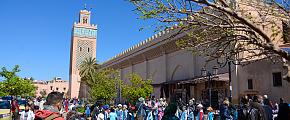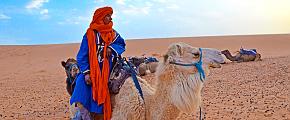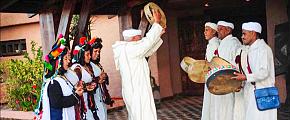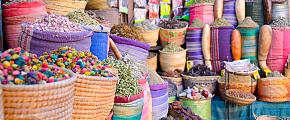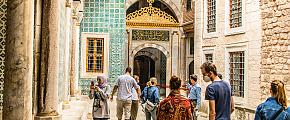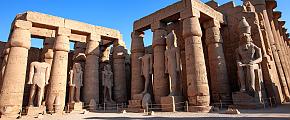Best Time to Visit Morocco
The climate in Morocco may be fickle and change from one year to another. There are mild winters and there are damp, chilly winters. It doesn't matter if it's rainy or very hot; Morocco has its own unique charm.
In general, the best time to take a trip to Morocco is from April to mid-November, which encompasses three seasons: spring, summer, and autumn. Temperatures are usually cozy through the year in Morocco, in contrast to piping hot summers and glacial winters.
All seasons are suitable for exploring the seaside. The country enjoys comfortable drops of around 4 degrees during the winter and agreeable highs of around 21 degrees during the summer.
You may also go hiking in the Grand Atlas Mountains any time of year, although winters can be rather bitter. If you are the long-haul hiker type, mid-March to mid-November is the ideal time when temperatures are milder. The mountain peaks are covered in snow from December to February, providing a breathtaking view but making trekking more dangerous.
Many businesses, including public transport, are slowed down or closed during the holy month of Ramadan. Each year has a different schedule, so be sure to double-check before booking.
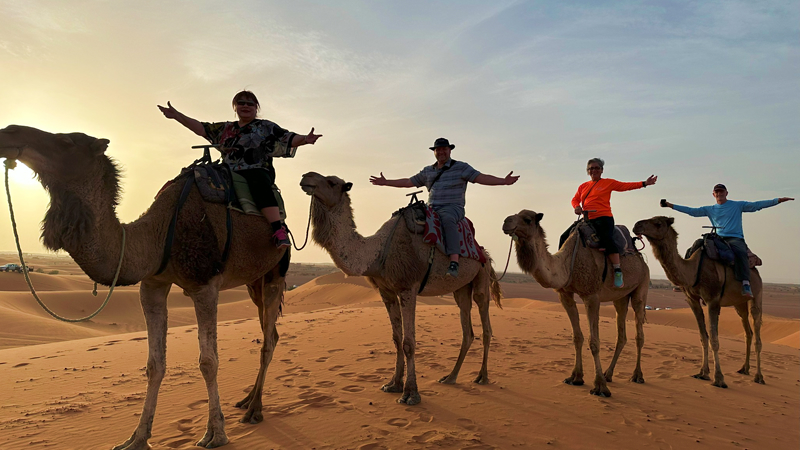 Morocco Camel Ride
Morocco Camel Ride
High Season: March - May and September - November
For many travelers, springtime and autumn are the best seasons to explore Morocco due to the mild weather. Nonetheless, springtime is also characterized by sandstorms in the Sahara desert and prolonged rainfall in the northern hemisphere. During the Easter holiday, many people from Europe travel to Morocco in search of warmer temperatures. This increases both demands for lodging and pricing.
March announces the arrival of the spring season in Morocco. The cold temperature of wintertime finally gives way to cozier weather. Temperatures gradually rise from one region of the country to the next, with southern cities like Marrakesh enjoying pleasant weather with temperatures averaging in the mid-to-low 16 and low 20s and northern towns like Fes and Tangier experiencing slightly colder temperatures. March is likely rainy, so it is among the wettest months in Morocco. You should be well equipped for the rain unless you're heading to the Atlantic coastline or the Mediterranean beaches.
From April to May, spring's temperatures all around the country range from a pleasant 16 degrees to a sizzling 36 degrees, making this a great season to explore Morocco. Springtime rains are very regular, although due to the country's diverse topography, conditions may vary widely from one part of the country to another. On May 1st, Morocco celebrates Labor Day. As a result, certain businesses and institutions are close, and locals like to visit popular attractions during this day.
September, which follows Morocco's warmest months, may be very hot or somewhat pleasant, depending on your journey's destination. Even though Marrakech's daytime temperatures are around 32°, it's not a good idea to go on trips into the nearby desert.
Even in September, the weather in cities like Marrakesh (average daily temperature of 32°), Fes (average daily temperature of 31°), and Rabat (average daily temperature of 27°) can be very uncomfortable for travelers. Because of this, it's best to go trekking in the Highlands (average daily temperature of 25°) or spend some time on the beautiful beaches of the Atlantic Coast (average daily temperature of 23°) or the Mediterranean.
The months of October through November mark the full entry into autumn, and they are known to be the second-best time to visit Morocco after April and May in the spring. With moderate lows of 14° and average daily highs of about 28° in Marrakech, the climate is still warm but pretty good for touring popular sites and spending some nights in the luxury camps of the Merzouga Desert. Since there is less precipitation to worry about, it is suggested to dresses more relaxed in the inland, and to pack warmer clothing for those planning to spend some nights, such the desert or the Highlands.
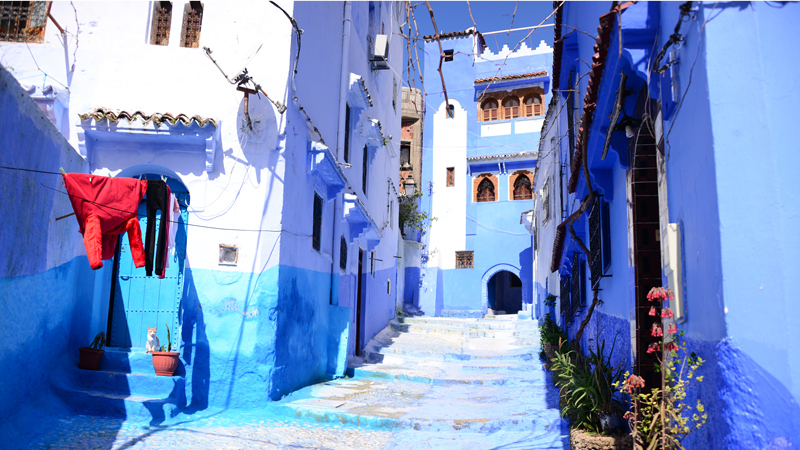 The Blue Town of Chefchaouen
The Blue Town of Chefchaouen
Visitors may experience even chillier weather in the High Atlas, which will complement the season's changing flora. The coastal regions will be less crowded during this period, with the water still warm enough and the wind gradually increasing due to the transition to another season. For tourists heading to the beaches, especially in November, make sure to bring along wetsuits to keep their bodies warm if needed.
Shoulder Season: December - February
The Sahara is more pleasant to visit in the winter, when temperatures are lower. During the holidays, many people go to famous places like Marrakesh and other southern cities, but northern Morocco is often cold and damp. When it starts snowing, it might close up the roads in the mountains.
With warm and slightly wet weather, December is ideal for outdoor activities like trekking and sightseeing.
In northern cities like Fes, the daily average temperature is 18° and the average low is 6°; therefore, it's recommended to bring along some warmer clothes. The typical high temperature in the High Atlas is 14 degrees, and there is a good chance of rain almost every day. Popular destinations such as Tangier may look forward to rainfall and mild temperatures in the 10s, but, on the other hand, Marrakesh daytime temperatures hit around 21 degrees with warmer weather. It becomes cold in the desert at night, so bring some warm clothes.
The coldest months in Morocco are pleasantly temperate. Unfortunately, in January, the weather is both rainy and freezing. During this month, the highest temperatures approach 13-16 degrees and the lowest are usually around 4 degrees. The region around the Grand Canyon can be significantly cooler at this time of the year; for this reason, many visitors head to the desert, which is potentially warm. After nightfall, January in Morocco may be very cold, although during the daytime the weather is often sunny and warm. During this month, precipitation typically falls on seven out of a possible eight days.
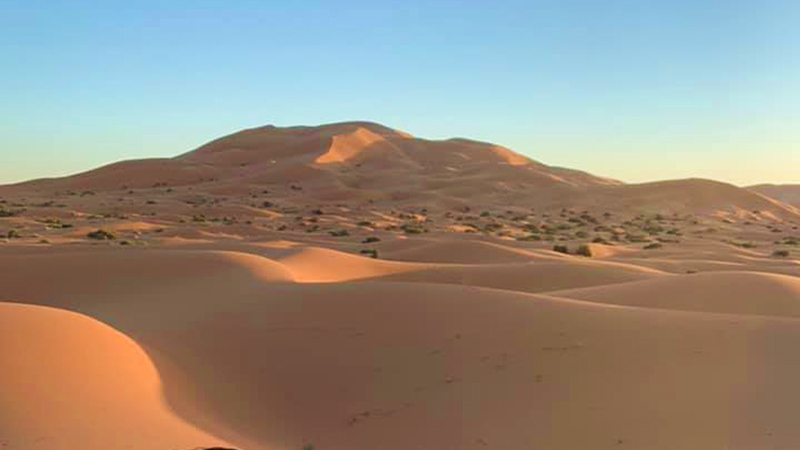 Sahara Desert
Sahara Desert
Better than in January, temperatures in southern Morocco are warmer in February. In Marrakech, the sun shines brightly, with highs in the low 20s and lows in the mid-to-upper 10s. Northern locations, such as Tangier, see lower temperatures and higher cloudiness, with average highs around 16 and a preponderance of overcast days. In the High Atlas, daytime highs may reach the mid-60s, while nights are considerably chillier. Even if it usually doesn't rain much in February, you should still prepare for wet days.
Low Season: June - August
While interior towns have a surge in summertime temperatures, the Atlantic Shores and Mediterranean beaches see a corresponding increase in internal tourists during the months of July and August, and prices rocket in those areas.
Heat waves in Morocco often begin in June and last until August. Heat exhaustion is a real risk for travelers in Marrakesh, and much higher temperatures are common in the northern part of the country. Waking-hour highs average 26 degrees in the High Atlas, but coastal breezes moderate the heat on the coast and in northern towns like Fes, where the mercury seldom rises beyond 27 degrees. During the summer, the average high temperature along the northwesterly shore in Tangier is a pleasant 21 degrees. No precipitation is expected, but heat exhaustion is a real risk.
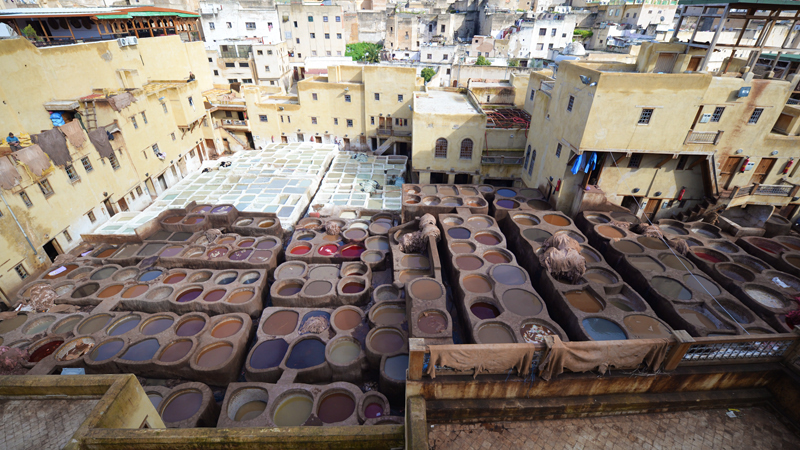 The Media in Fez
The Media in Fez
Although not recommended since these months are the warmest in Morocco, July and August shouldn't be completely disregarded. These months are fantastic for travel if you want to beat the crowd. On the other hand, this period corresponds with the summer break in Morocco, so domestic tourism is at its peak. This is a prime time for family vacations; therefore, you should make your lodging reservations beforehand, especially for those with a pool to relax in when temperatures become unbearable.
If you're planning to visit Morocco but don't know how to start, please don't hesitate to contact us, just simply tell us your interests and needs, and one of our travel experts will create a tailor-made itinerary for you within 24hrs.

